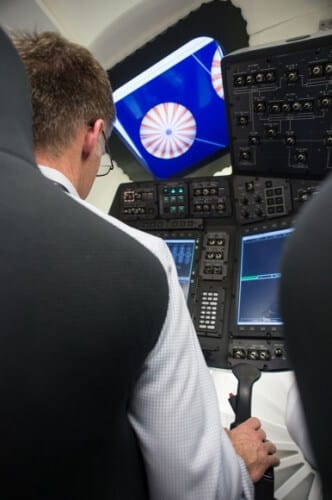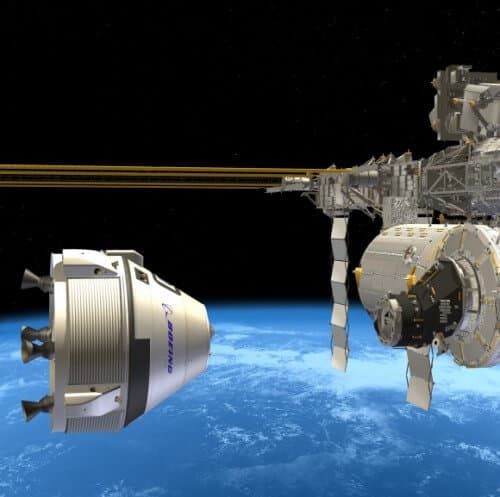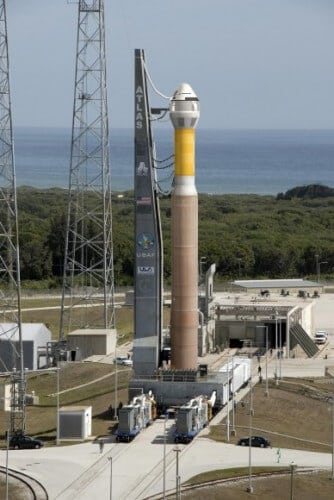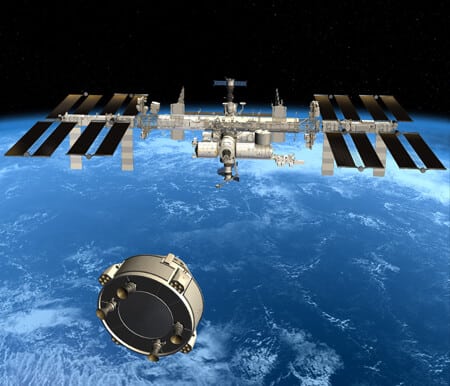An interview with Chris Ferguson, the last commander of the shuttle Atlantis and currently the head of the project on behalf of Boeing

Boeing expects to launch the first unmanned spacecraft as part of the CST-100 commercial spacecraft project, also known as the "Space Taxi" in early 2017." But says Chris Ferguson, commander of the last shuttle flight in a special interview with the website Universe Today in which he provided a close look at Boeing's space efforts. Ferguson is at the forefront of Boeing's manned spacecraft project as the mission and mission manager.
"The first test flight in orbit is planned for January 2017 and it may also attach to the space station," says Ferguson in a comprehensive interview about Boeing's ambitious plans and the development of a spacecraft capable of flying humans called the CST-100, with a little help from NASA.
Boeing has purchased a launch window at the Kennedy Space Center through United Launch Alliance but the details have not been released. If all goes well the first manned flight of the CST-100 is expected around mid-2017.
"The first manned test flight should take place in late summer 2017 with a crew of two," Ferguson said, adding that "we may travel all the way to the International Space Station."

Boeing is the third American company to join the race of civilian companies building spacecraft that will help restore America's power in flying humans into Earth orbit and the International Space Station by the end of 2017, with the help of initial funding from the Commercial Crew Program (CCP) in a partnership between the government and industry. The other two companies are SpaceX and Orbital Sciences. The announcement of the next round of NASA contracts is expected around the end of 2014.
"It's been over a thousand days since we landed on mission STS-135" Ferguson said as he looked at the counter on his wristwatch. Ferguson has experience in three shuttle flights.
Since the retirement of the shuttles in July 2011, following the landing of the space shuttle Atlantis on its last space mission commanded by Ferguson, no American astronaut has taken off into space from American soil aboard American launchers and spacecraft. The only ticket to the International Space Station is reserved for the Russian Soyuz spacecraft.

Ferguson and his management team at Boeing hope to change the situation soon. They want to build a reliable spacecraft that will provide cheap access to low-Earth orbit destinations such as the International Space Station and the planned private space station Bigelow.
Boeing wants to launch its private spacecraft to the space station first in unmanned and manned test flights in 2017. Says Ferguson and adds: "NASA is seeking to provide manned flight services by November 2017, and this appears in the CCP contract."
The CST-100 spacecraft will be launched on an Atlas 5 launcher that will be upgraded to a level that allows for the launch of humans, and it will carry a mix of cargo and up to seven humans to the International Space Station. "Therefore, both the first unmanned test flight and the first manned test flight will take place in 2017. The first is planned for January 2017. The first test flight may take place at the end of summer 2017," he added.
In response to the interviewer's request to outline the mission plans for the two flights, Ferguson replies: "The first flight was initially planned to take off to a low orbit, with the possibility of approaching the International Space Station, but we do not rule out our ability to dock, so if the systems are mature enough, I expect that we will be able to make it all the way and finally dock At the station, although this is still not certain."
SpaceX did it - it docked on its first test flight
Ferguson: "I think we can do it too, the only question is if we can convince the swallows of the space station to trust us. And the answer to that is positive."

Next year the processes and plans will improve and it will be clearer what our capability is, and NASA understands our capability and I am sure they will give a boost to their plans as they did with SpaceX and Orbital Sciences."

5 תגובות
father
I don't think you're right about the cold war. The next war between the next superpowers will be decided over fiber optics, not in space.
To the commenter, I think you are right. What shows that progress in space technologies is more complicated without a close government framework. In the future there will probably be rapid growth in the field. In light of the renewal of the Cold War. At some point they will cooperate. Similar to what happened in the International Space Station.
reagent
This spacecraft is much cheaper than the Apollo spacecraft. Do you expect a private company to spend billions on each spacecraft?
This spacecraft is indeed super efficient and innovative, based on what exactly are you claiming otherwise?
This spacecraft marks a severe regression in the field of space. You would expect the next generation spacecraft to be a super efficient and innovative shuttle capable of reaching distances like the moon (at least). Instead we returned to a damp box with a parachute. A bit depressing.